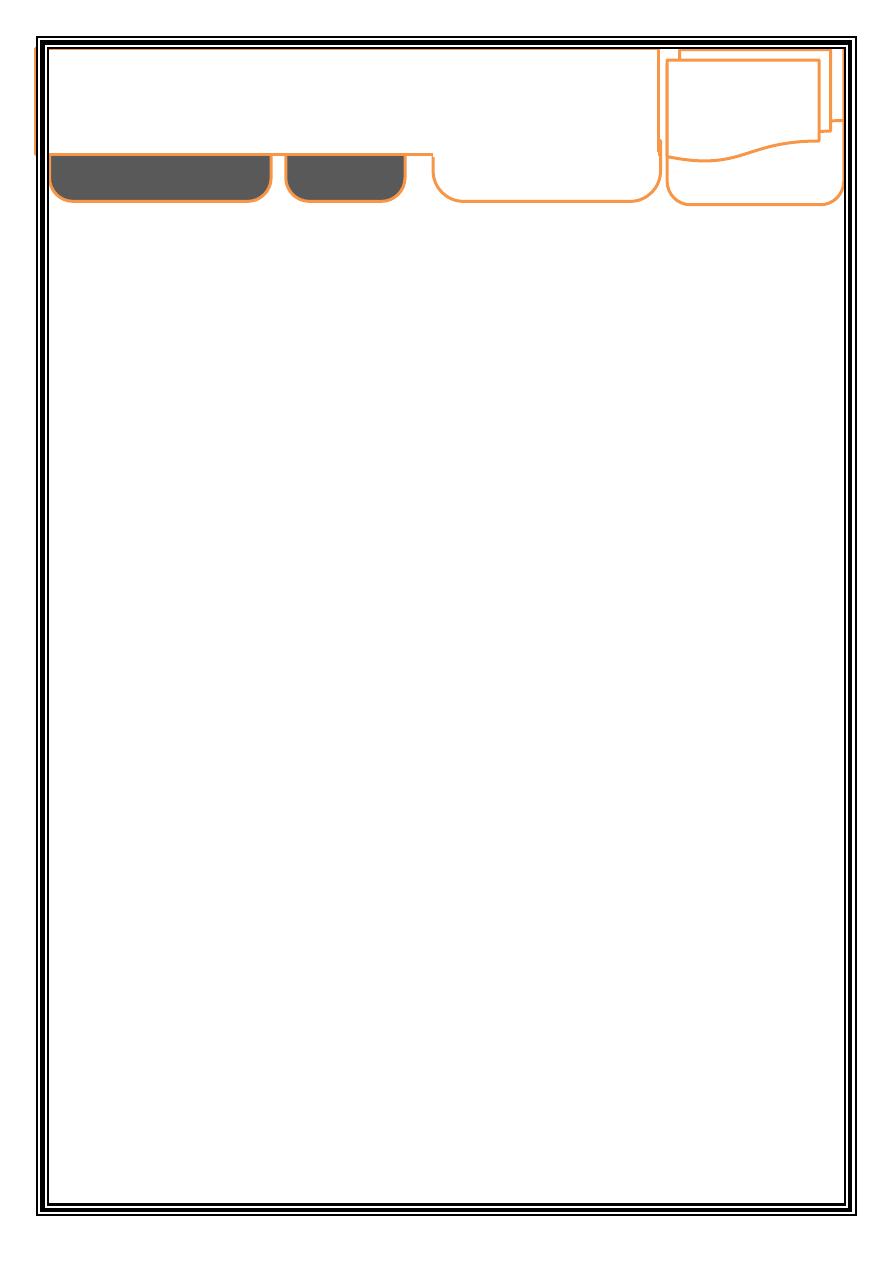
Page1
Oral medicine:
is that branch of dentistry which is concerned with the
diagnosis and non-surgical management of disease of the oral and
maxillofacial region, along with health of medically compromised patients.
Or it may be defined as the diagnosis and treatment of diseases with non-
surgical management.
Oral diagnosis
: a systematic method of identifying an oral problem.
Diagnosis process
(sequence): it is divided into four steps:
1. Taking and recording patient history
2. Examination of patient which includes both clinical and laboratory
investigations
3. Diagnosis by evaluation of history, physical and laboratory
investigations
4. Treatment plan.
1. Taking patient’s history
a. Routine data: name, age, sex, race and telephone number.
b. Chief complaint: recorded by patient’s own words, reason for patient
visit, usually related to uncomfortable sensation, best treatment is
achieved if chief complaint is properly recorded.
c. HPI: account of chief complaint from onset of the disease until the
history is taken.
Oct 3 & 4
د. ﻋﺒﺎس
3 Sheets / 150 I.D.
ﻃﺐ
ﻓﻢ
-
ف
١
1&2
Introduction
part 1 and 2

Page2
d. Past and present medical history: (serious illness, hospitalization,
transfusion, allergy, medications, childhood diseases, pregnancy, review
of systems) is important because of:
a. Identification of systemic diseases that modifies treatment plan
b. Identification of drugs that interfere with treatment
c. Identification of contagious diseases
d. Facilitate effective communication with the physician
e. Provide medicolegal protection
e. PDH: includes what have been done and outcome of previous visit and
reason for previous visit as well as type of treatment
f. Family history: to discover:
a. Cause of death of relatives due to hereditary disease
b. Any disease with familial tendency (D.M, H.T, migraine,
psychologic disease)
c. Any contagious disease that infect the members of the same
house (hepatitis, AIDS, syphilis)
g. Social history: marital status, any habits (smoking, addiction)
2. Examination of patient:
principles of clinical examination:
a. Visual inspection: systematic observation of the patient. Needs good
light, mirror and probe with removal of any barrier
b. Palpation: bidigital (fingers) or bimanual (one hand intraoral and the
other is extraoral), palpation give an idea for:
i. Texture: feel the surface of any lesion with fingertip> soft,
lobulated, smooth or irregular.
ii. Dimension: with texture assessment to know the depth of mass
iii. Consistency: compressibility of the lesion:
Soft>lipoma, firm>fibroma, rubbery>Hodgkin’s lymphoma, rocky
hard>metastatic tumor

Page3
iv. Temperature: best examined by dorsal surface of the hand (thin
skin, well innervated)
v. Functional events: any movement (tooth mobility)
c. Probing: periodontal probe, lacrimal duct probe.
d. Percussion: striking the tissue with finger or instrument and noticing
the response of the patient.
e. Auscultation: listening to the sound of the body cavity with stethoscope
(TMJ, heart, blood pressure)
f. Aspiration: withdrawal of fluid from body cavity and examining the
aspirate
i. Nothing withdrawn: wrong position, empty space, solid.
ii. Yellowish to straw blood tinted colour> cyst
iii. White> keratocyst
iv. Reddish> hemangioma
Fluctuation: a sign indicating presence of fluid within a cavity
g. Diascopy: specific method done by using glass slide, used to diagnose if
any reddish, pinkish or bluish lesion is vascular in nature (positive:
hemangioma, hemorrhagic telangiectasia, varices, spider angioma),
(negative: amalgam tattoo, purpura –ecchymosis or petechia- or any
other pigmented lesions)
h. Evaluation of function:
i. Tears: Schirmer test
ii. Salivation: massage or milking
iii. Taste: different materials applied on tongue
iv. Mastication v. Neurological: sensory and motor, convulsions
Current:
introduction
part 1
Oct 3
Next:
Introduction
part 2
Oct 4
Later:
Red and white lesion part 1
Oct 25

Page4
General examination
1.
Vital signs:
a. R.R.: normal: 14-16 breath/m, tachypnea: > 10 breath/minute
b. Pulse: best measured by radial and carotid artery
i. H.R.: 60-100 bpm
ii. Rhythm: regular or irregular
c. Temperature: oral 37, axillary 63.3, rectal 37.7
d. BP: 120/80 mmHg
2.
Examination of the head
A. Skull B. Ear
C. Skin
D. TMJ
E. Eye colour(red> allergy, trauma, inflammation), (yellow> jaundice
due to hemolytic anemia, cholecystitis, hepatitis), (bluish>
osteogenesis imperfecta)
F. Post and preauricular lymph nodes
3.
Examination of the neck:
thyroid, trachea, common carotid artery,
sublingual lymph nodes, submental lymph nodes
4.
Oral examination:
tongue, floor of the mouth, buccal mucosa
Laboratory investigations:
to support clinical examination, including:
1. Radiographic examination
a. Conventional x-ray radiography
b. Contrast medium (water soluble or water insoluble), used for TMJ
(arthrography) to detect : (perforation, shape of disc, loose body
within joint compartments), for salivary glands called sialography
c. C.T. scan> bone
d. MRI: cancer and soft tissue imaging
e. Ultrasound: stone in salivary gland
f. Scintigraphy: giving radioactive isotope to the body, taken by
active tissue, imaged, excreted from the body.
2. Supplemental diagnostic aids:
a. Bacteriological
i. Stain smear from oral cavity
1. To identify the microorganism by gram stain or PAS stain
2. For diagnosis of premalignant lesion by Papanicolaou stain

Page5
3. Diagnosing unusual cells : giant cells, Tzanck cells (Giemsa stain)
ii. Culture and sensitivity test: done for patient with extensive mucous
membrane, skin or bone infection. Used in:
1. When patient relapses
2. Disease is severe
3. Cause is uncertain, and there is no response to treatment
Methods are: disc fusion, test tube fusion, agar media fusion
b.
Biopsy:
surgical removal of part or whole lesion of living tissue for the
purpose of histopathological examination, indicated in:
i. Confirmation of diagnosis in clinically malignancy-suspected lesions
ii. For diagnosis of undiagnosed lesions
iii. To evaluate the exact histopathological nature of any soft tissue of
bone lesion
Types:
i. Excisional or treatment biopsy: removal of the entire lesion, for
small lesion, diagnosis and treatment
ii. Incisional or diagnostic biopsy: used in large lesion, the surgeon
takes part from normal an abnormal tissue by wedge shaped
incision with certain depth
iii. Fine needle aspirate: microscopical examination of aspirate
obtained by insertion of needle in lesion, painless, fast and safe
procedure, used for lymph nodes and salivary glands
iv. Intraosseous biopsy: less performed, surgical drilling deep into
bone or cartilage to confirm diagnosis of radiographic changes
v. Frozen section: to get immediate histopathological report of
lesion, indicated in:
a. Confirmation of malignancy
b. Evaluate margins of lesion
c. Confirm removal of entire lesion
vi. Punch biopsy: sharp hole is made with several mm in diameter by
rotating a circular blades into the lesion until underlying bone or
muscle is reached
vii. Oral CDX system: highly specialized computer assisted analysis of
oral brush biopsy, it is a recent method that determines need for
further scalpel biopsy in benign-looking mucosal leukoplakia

Page6
viii. Oral exfoliative cytology: microscopical examination of surface
cells scraped from oral mucosa, smear is then fixed on slide
Indications
a. Large lesion distributed over large area in oral cavity
b. Diagnosis of clinically undiagnosed lesions
c. Patient refuse surgical biopsy
Contraindicated in deep lesion or lesion covered by
pseudomembrane, necrosis, keratin or normal mucosa
c. Hematological tests:
i. Complete blood picture: MCV, MCH, MCV, ESR, PCV, Hb…
ii. Blood chemistry: auto analyzers gives information about different
enzymes, hormones and other materials in blood (ex. Glucose).
iii. Serological tests: measurement of antibodies that increase in
concentration in serum, saliva or other body fluid upon
inflammation, for examples: Wassermann test for syphilis.
iv. Immunofluorescence: direct (biopsy and serum), indirect (serum
only) or sandwich
Diagnosis:
identification of disease by investigation of sign and symptoms
Differential diagnosis:
redetermination by systematic comparison and
contrast of symptoms from which patient is suffering
Prognosis:
forecast of probability of disease results
Successful treatment plan is always based on careful planning
The goal of treatment plan is to devise best disease treatment for the
patient including what to do and when to do
Phases of treatment
a. Priority treatment
b. Disease control
c. Restoration of function
d. Reevaluation
e. Recall
Previous:
introduction
part 1
Oct 3
Current:
Introduction
part 2
Oct 4
Next:
Red and white lesion
part 1
Oct 25
Later:
Red and white lesion
part 2
Nov 1
